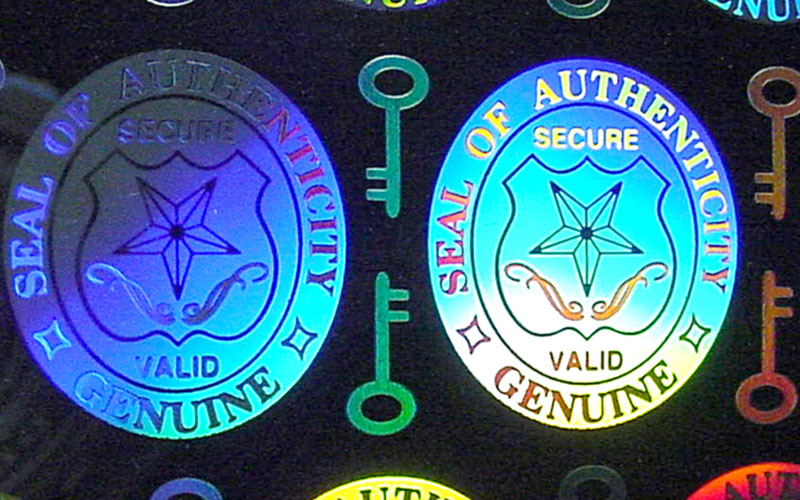
By Lara Copeland, contributing writer, PostPress
Privately owned and founded in 1971, Crown Roll Leaf, Inc., Paterson, New Jersey, has a vertically integrated holographic division, Crown Holo-Grafx™, which provides fully integrated hologram design, origination and manufacturing. Crown has multiple in-house laser/computer pixellation labs where it produces custom and stock holograms.
Security holography has evolved in the last decade thanks to advancements in computer technology and digital printing. With counterfeiting as prevalent and sophisticated as ever, businesses are battling to maintain the integrity of their goods. According to Crown, the best way to fight counterfeiting is in a multi-level approach. Crown uses a preemptive strategy – a combination of holography, special coatings and substrates, as well as sophisticated printing techniques – to fight counterfeiters.
A typical custom hologram is produced through a number of steps. When a customer forwards their hologram specifications to the art department, spec/forensic sheets are created and sent back to the customer. If they are approved, digital artwork is prepared and sent to the hologram lab for origination.
When the digital art files are prepared for origination into the digital holographic machine in the hologram lab, the image is recorded onto a holographic photo-resist plate. Once this is finished, the plate is inspected and sent to electroforming. Here, the plate is silver sprayed and put into electroplating tanks. A nickel master is grown to make nickel shim copies for mechanical recombination. The 1-up holographic image is recombined into an acrylic plate according to the production specifications for the foil production master.
Next, the production acrylic plate goes through the electroplating process to create the nickel master for embossing. During the embossing process, a nickel shim is mounted onto rollers on the embossing machine where heat and pressure are used to transfer the holographic image into a coating on the roll of film. An even deposition of metal/HRI coating is applied to the entire roll of embossed film after it is placed into the metallizer, thus creating the end result: a foil product. The rolls of metallized foil are ready for the application of adhesive coating before going through inspection and slitting into the final specified rolls of holographic foil.
Several techniques are used in making a hologram. Surface diffraction images are line art images assembled from sections of “rainbow gratings.” These gratings are arrays of straight lines spaced closely together (20,000 per inch) and diffract light into a rainbow of colors. This means different colors are seen from different angles. Color images can be assembled by using various orientations of the rainbow grating in individual parts of the image. These images are 2D, colorful and bright, lending themselves to logos and decorative images, and they may be combined with other types of holograms.
Made from either flat art or photographs, 2D/3D holograms depict the subject arranged in two-dimensional layers separated in space. Typically, two or more layers are used; however, when only one layer is used, the hologram is called a 2D hologram and there is no effect of depth or space. With two or more layers, the hologram shows depth, and the special separation of layers is evident.
Crown states that the best and most secure hologram combines all of the above techniques in addition to overt and covert security features. Its facility houses a state-of-the-art holographic origination machine and is capable of producing such a secure hologram.
Overt features include flip images, animated effects, embossed or relief holographic effects, non-diffracting or white imagery, and fine line guilloche. The covert features that can be added to a hologram include hidden images, micro-text and nano-text.

